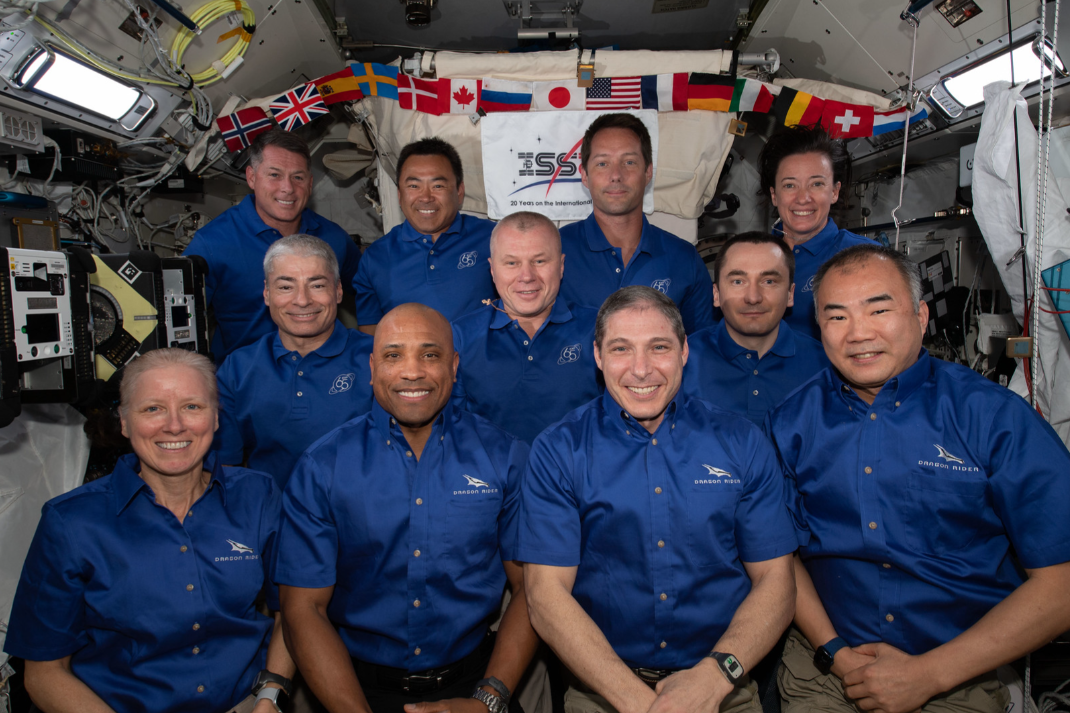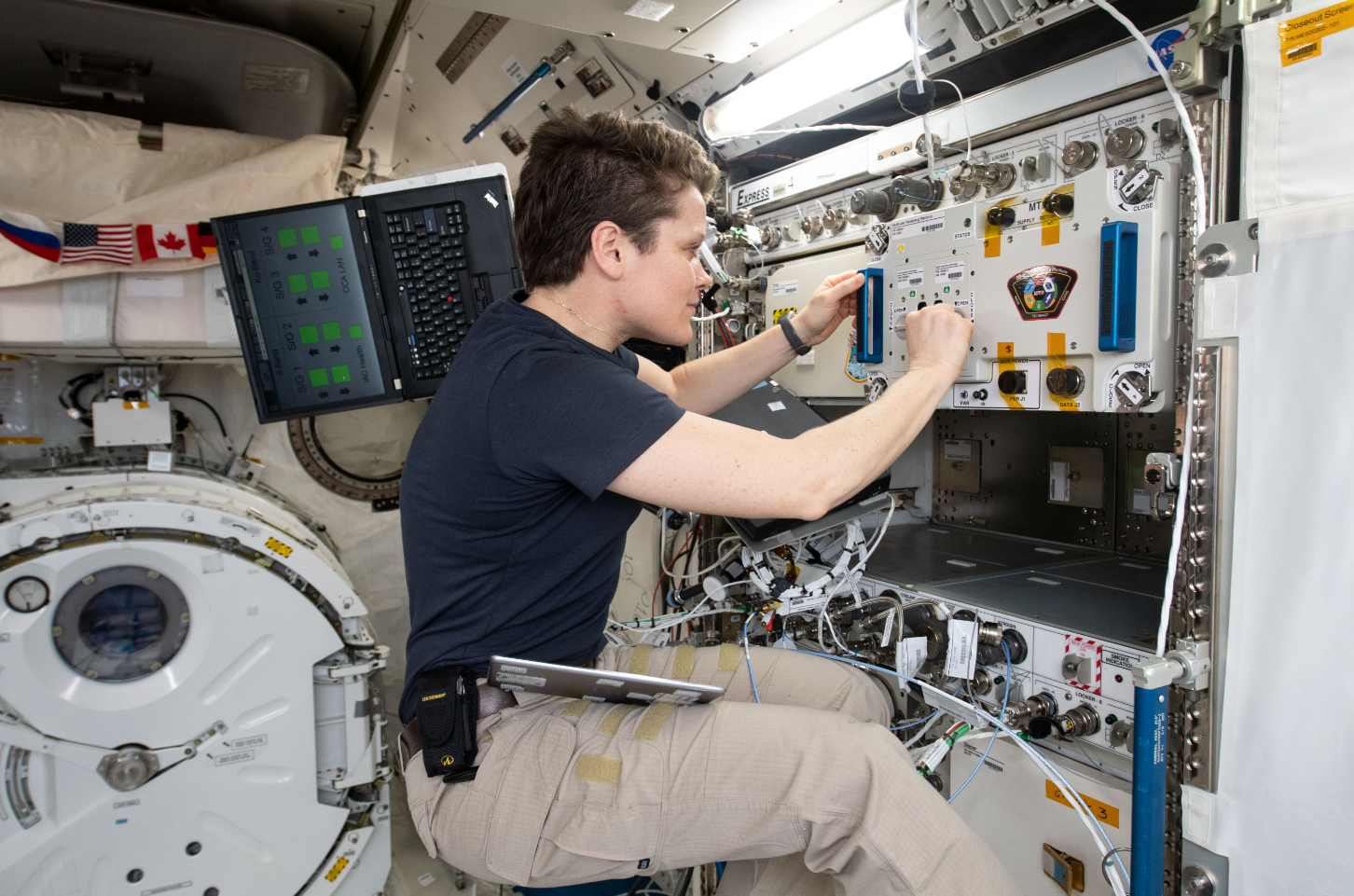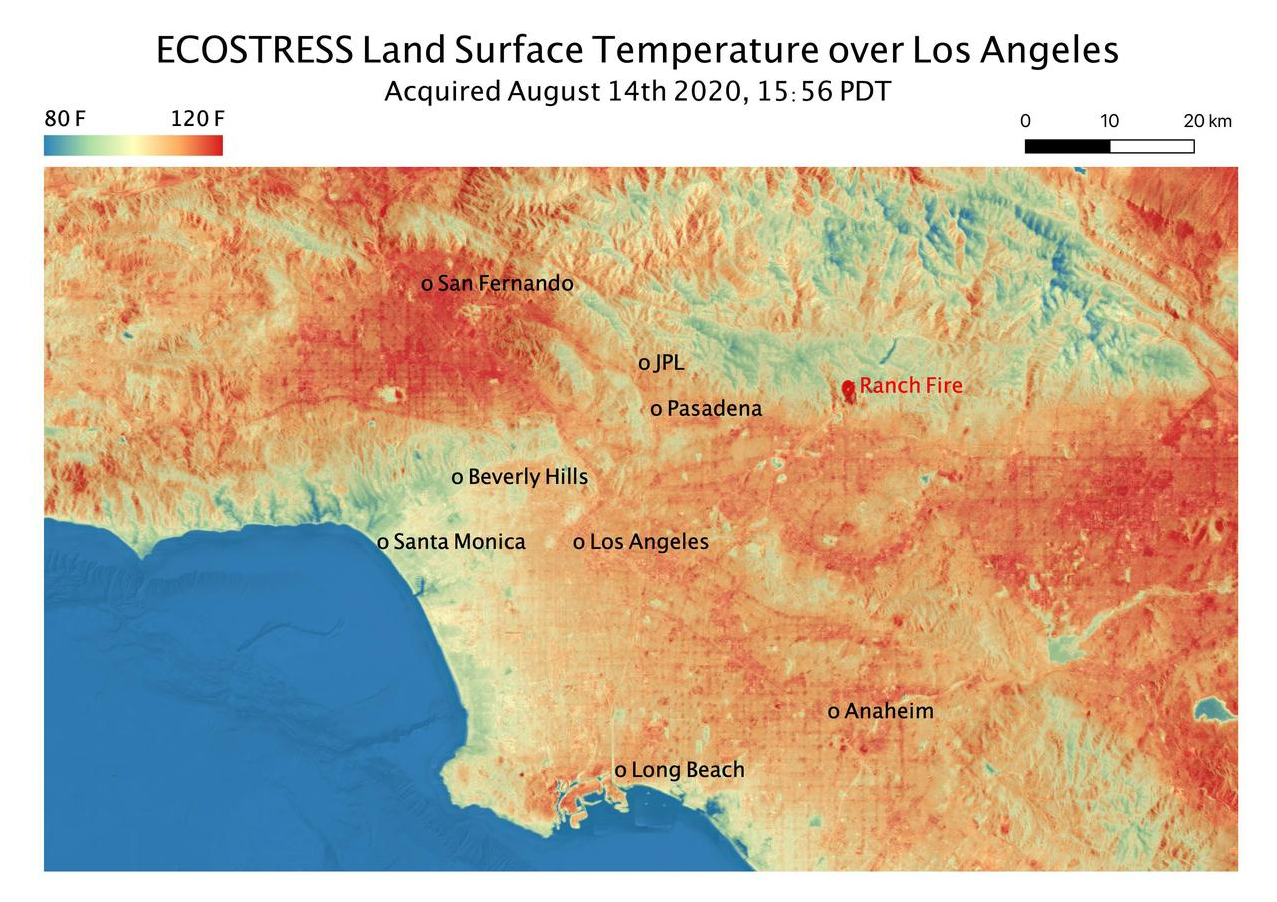Station Science Top News: June 16, 2022
Space station science during the pandemic (2020-2022) by the numbers:
- ~5400 hours of U.S. Operating Segment utilization crew time (5,387 hours from March 2, 2020, to Feb. 28, 2022).
- 137 days: Teams supported the growth of four chile pepper plants for 137 days in 2021. This was the longest plant experiment in space station history.
- 200-layer film manufactured: On SpaceX CRS-24, the LambdaVision research team was able to manufacture a 200-layer film for the first time aboard station, an important step toward the creation of artificial retinas in microgravity.
- 355 days: Mark Vande Hei set the record for the longest single spaceflight by a NASA astronaut by spending 355 days in low-Earth orbit while contributing to hundreds of science experiments.
- 1,500 flames lit: In 2022, the Advanced Combustion via Microgravity Experiments, or ACME, series of combustion investigations retired after lighting more than 1,500 flames aboard the space station.
- 186 top-tier research results: More than 180 scientific articles were published in top 100 academic journals during the pandemic. [Journal ranking is determined annually by the global database Clarivate Analytics.]
- 147 NASA top-tier research results: NASA led the way with the highest number of top-tier scientific articles published during the pandemic (NASA:147, JAXA:21, ESA:16, CSA:1, ROS:1).
- More than 100 NICER top-tier research results: The investigation Neutron star Interior Composition Explorer, or NICER, published more than 100 scientific articles in top-tier academic journals during the pandemic.
- 23 top five research results: More than 20 space station publications were featured in the world’s top five journals: Nature, Nature Communications, Scientific Reports, Science, and PLOS One.

In the back row (from left) are SpaceX Crew-2 astronauts Shane Kimbrough of NASA, Akihiko Hoshide of the Japan Aerospace Exploration Agency (JAXA), Thomas Pesquet of ESA (European Space Agency), and Megan McArthur from NASA. In the center are NASA astronaut Mark Vande Hei and Roscosmos cosmonauts Oleg Novitskiy and Pyotr Dubrov, who rode the Soyuz MS-18 crew ship to the orbital lab on April 9, 2021. In the front row are the SpaceX Crew-1 astronauts Shannon Walker, Victor Glover, and Michael Hopkins, all from NASA, and Soichi Noguchi from JAXA. Credits: NASA
***
NASA’s 12 EXPRESS Racks, which support hundreds of science experiments on the International Space Station, reached 1 million hours of total powered time on June 14, 2022 — a major milestone for the facilities.
Built at NASA’s Marshall Spaceflight Center, the racks can support science experiments of any discipline and provide stowage, power, data, command and control, video, and much more to the research investigations. The experiments housed in these racks are managed and monitored 24/7 by the Payload Operations Integration Center.
Watch NASA astronaut Kjell Lindgren discusses the milestone.
 NASA astronaut Anne McClain installs the MVP-2 platform onto Express Rack 4 aboard the International Space Station. Credits: NASA
NASA astronaut Anne McClain installs the MVP-2 platform onto Express Rack 4 aboard the International Space Station. Credits: NASA
***
Data from the ECOsystem Spaceborne Thermal Radiometer Experiment on Space Station, or ECOSTRESS, mounted on the outside of the space station, has been employed in efforts to reduce heat absorbed by city surfaces, better allocate water, reduce fire risk in forests, measure plant stress, search for geothermal energy sources, track mosquitos, and help farmers efficiently water their fields.
ECOSTRESS measures subtle changes in temperature to identify plant stress, but those same measurements also can be used to identify extreme heat, such as that produced by fires or lava flows. Researchers can study movement of warm water currents and heatwaves in cities using this tool as well. For example, Cool Streets LA researchers studying different materials that could reduce urban heat used data from ECOSTRESS to see how the surface heat of neighborhoods changed as they applied coatings. They found that a thin gray coating can make an asphalt roadway reflect the sun like a concrete roadway, reducing surrounding heat by about two degrees Fahrenheit.
This space station benefit, along with many more, will be included the International Space Station Benefits for Humanity 2022 publication coming late July.

This temperature map shows the land surface temperatures throughout Los Angeles County on Aug. 14, 2020. The observation was made possible by NASA’s ECOSTRESS, which measured a peak land surface temperature in the San Fernando Valley, northwest of downtown Los Angeles, of 128.3 degrees Fahrenheit. ECOSTRESS collected this data as the space station passed over California at about 3:56 p.m. PDT during a record-breaking heat wave that gripped the region. Credits: NASA/JPL-Caltech







